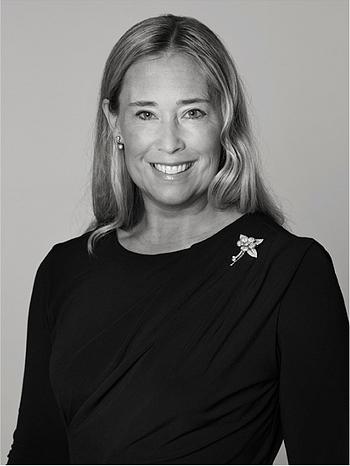A large seated bronze figure of Budai, Ming Dynasty, dated to the fifth year of Jiajing (1526).
The corpulent smiling budai is placed seated on a lotus base, wearing a floral-hemmed robe loosely draped across the shoulders that open to reveal a round belly, the face wearing a joyful laughing expression, eyes closed, lips parted in a wide smile and forehead crinkled, framed by pendulous earlobes. The right hand resting on the knee and holding a mala/rosary the left hand resting on the left knee, the neck of a sack just visible below, the base finely incised with lotus petals further decorated with scrollwork and coins, some dated to the Song-dynasty. The reverse bearing the incised date 1526 and names of donors. With traces of gilding and red lacquer.
Inscription reading: ”The monk Deshou Yuanlin made this Buddha statue in bronze on the eighth day of the third month in the fifth year of Jiajing. The names of those who have contributed to (paid for) this follows here: (a list of approximately 60 names).
Traces of gilding and lacquer. Height 56 cm.
Wear, damages and repairs.
Alkuperä - Provenienssi
Sold at Bukowskis 583:548, then from the Collection of Anders Hellström (1877-1940)
An industry leader best known for his work as managing director and chief executive of the paper and cardboard manufacturer AB Papyrus between the years 1912-1940.
In addition to his daily work, he spent a lot of his time on cultural work.
With his practical abilities associated Hellström vast cultural interests it came in handy with his skills in maintaining communication with representatives of science and art. In a number of artistic and scientific-acting compounds, he played a leading role,
in particularly the ancient Chinese art that was his main interest. The outstanding collection of Chinese bronzes he had acquired over the years, would in professional circles receive the highest appreciation. A few years after his death, part of his collection became donated to the museum of Far Eastern Antiquities in Stockholm.
Näyttelyt
Compare with another dated buddai, sold at Christies, 15706 Fine Chinese Ceramics and Works of Art, lot no 1134. Dated to 1428. Stephen Junkunc, III (1904-1978) Collection
Kirjallisuus
To read about Hellströms bronze collection, see; Litterature published by Professor Bernhard Karlgren in 1948 in “Bronzes in the Hellström Collection”.
Muut tiedot
Buddhist figures from the Jiajing period are rare. The Jiajing emperor was a devoted follower of Daoism and attempted to suppress Buddhism however he could and that is why Buddhist figures from his era are comparably few in number. Inscribed examples are particularly rare. This imposing figure is also notable for its large size.
According to Chinese history, Budai was an eccentric Chan monk (Zen) who lived in China in the beginning of the 10th Century. His Buddhist name was Qieci (literally: "Promise this"), and he was considered a man of good and loving character.
Budai carries his few possessions in a cloth sack, being poor but content. He is often depicted entertaining or being followed by adoring children. His image graces many temples, restaurants, amulets, and businesses being a symbol for happiness, prosperity and wealth.
Budai is usually identified with or seen as an incarnation of Maitreya, the future Buddha, so much so that the Budai image is one of the main forms in which Maitreya is depicted in East Asia. Since he is almost always shown smiling or laughing, his popular nickname in Chinese is the Laughing Buddha.



















































